Watch Data
Pink gold Repeating Watch no. 13760
Case: Pink gold, hunting, 59mm, hinged cuvette containing second dial, rear lid interior signed "Montre Perpetuelle, se remontant en regardant l'Heure Nouveau systeme, Brevete, MI, Chronometre, Maison B. Haas Jeune, Geneve - Paris", case no. 13760.
Dial: Double dial, main dial white enamel with Roman numerals, gold spade hands, subsidiary dials for seconds and second time zone, second dial with indicators for day, date, month and moon phase & age, this dial signed "Mon. B. Haas Jne., Geneve Paris".
Movement: numbered 15260 under dial
Provenance:
18?? - Haas Neveux, Geneva
2017 - Dr Crott auction, 18 Nov 2017, est €36-45,000, unsold, "Maison Benjamin Haas Jeune, Genève-Paris, Case No. 13760, 59 mm, 211 g, circa 1900
A remarkable, heavy minute repeating double sided pocket watch with patented cover winding mechanism, perpetual calendar, moon phase and second time zone
Case: 18k gold. Dial: enamel. Movm.: 1/2 plate movement, 2 hammers / 2 gongs, gold screw compensation balance.
According to our information this is the most complicated pocket watch with cover winding Haas ever created.
Haas & Cie.
In 1848 the brothers Leopold (1827-1915) and Benjamin (1828-1925) Haas, both knights of the Légion d'honneur, founded the ANCIENNE MANUFACTURE DES MONTRES HAAS & CIE in Geneva. The company excelled in unique and exceptional pieces and achieved its reputation with exquisite watches that pass for modern even today. Rare treasures such as the split second chronograph and beautifully wrought pocket and wristwatches were created in accordance with the manufacturer's fundamental motto of simplicity, technique and elegance. Benjamin Haas invented a form of winding where the mainspring was wound by opening the front cover of a hunting case watch. Patents, 1873, p. 48 illustrated and outlined British patent No. 3945, issued Dec. 2, 1873 to B. Haas. This patent was licensed to other makers. 1884 Haas changed their name to Haas Neveux & Cie, to communicate that new family members had taken positions in the company. At the same time the original logo of B.H. & Co. (for Benjamin Haas & Co) was changed to a small running hare and the letters HNC in an oval shape - representing the dynamic attitude of the company. In 1896 Haas Neveux & Cie establishes a record with an ultraflat 2mm movement for a ladies' watch and wins a first price for precision in the 1902 competition of the famous "Observatoire de Genève". English patent No. 3945 of December 2, 1873 was granted to Benjamin Haas for the development of a novel and unusual winding mechanism, which used the energy that is generated when the front cover of the watch is closed. Haas improved the original idea further and his watch possesses a well-developed system with a 36-hour power reserve (generated by twelve closings). Haas changed the going train by adding an additional wheel so that a single closing was able to achieve three hours' winding. He also invented a safety device which disengaged the mechanism when fully wound and thus prevented any damage to the cover.
#45949"
2019 - Antiquorum Hong Kong, est HKD 310,000 - 390,000, sold HKD 525,000 [CHF67,000] 28 Apr 2019 " LOT 504 HAAS POCKET WATCH WITH PATENTED WINDING-MECHANISM BY CLOSING THE COVER AND SEVEN HOROLOGICAL COMPLICATIONS, INCLUDING MINUTE-REPEATER, PERPETUAL CALENDAR WITH MOON PHASES AND TWO-TIME ZONE; 18K PINK GOLD "Montre perpétuelle se remontant en regardant l'heure, Nouveau système Breveté" later so-called "Remontoir perpétuel à décrochement" 18K pink gold, double-faced hunting-case, keyless-winding, roundshaped, pocket watch, with subsidiary seconds at 9, patented winding-mechanism by closing the cover and seven horological complications: - Minute-repeater on two steel gongs (activated by the slide at 6 o'clock) The first dial features: - Hours and minutes of a second meridian, known as petit tour d'heure (subsidiary dial at 3 o'clock, time-setting by push-bolt at 12 o'clock) The second dial features: - Perpetual calendar - Date of the month (exterior graduation with central hand) - Day of the week (subsidiary dial at 9 o'clock; indications given in French) - Month of the year (subsidiary dial at 3 o'clock; indications given in French) - Age and phases of the moon (subsidiary dial, graduated from 0 to 29 1/2, and aperture at 12 o'clock) Winding-mechanism based on the French invention patent No. 77 124, delivered on July 13, 1867, to Benjamin Haas Jeune, Paris, for a "Système de remontoir applicable à tous genres d'échappements - Montre savonnette se remontant en regardant l'heure", later socalled "Remontoir perpétuel à décrochement", and, the English invention patent No. 3 945, delivered on December 2, 1873 (Windingmechanism, keyless mechanism). Perpetual calendar mechanism based on the English invention patent No. 2 870, delivered on September 30, 1872, to Benjamin Haas Jeune, Paris (Calendar mechanism).
Brand Maison B. Haas Jeune
Model "Montre perpétuelle se remontant en regardant l'heure, Nouveau système Breveté"
Year circa 1875
Movement No. 13 760
Calibre  22''', nickel-plated, with going barrel, straight-line equilibrated lever escapement, cut compensated balance and blued steel hairspring with terminal curve
Case No. 13 760
Material 18K pink gold
Caliber 22''', nickel-plated, with going barrel, straight-line equilibrated lever escapement, cut compensated balance and blued steel hairspring with terminal curve
Dimensions Ø 59 mm
Signature dial, case and movement
Accessories copies of the invention patents.
Notes
Among the twenty or so known pieces with “remontoir perpétuel à décrochementâ€, the present watch is the most complicated known today from this series. Another watch, No. 15 849, made circa 1880, with minute-repeater, perpetual calendar with leap-year indicator and moon phases (not double-faced), was sold by Antiquorum, Geneva, auction, November 13, 2011, lot 494, for the amount of CHF 56 250.- Haas The house founded in Geneva in 1848 by the brothers Léopold Haas (1827-1915) and Benjamin Haas (1828-1925), later becoming “Ancienne Maison B. Haas Jeuneâ€, then “Haas Neveux & Co.â€, is one of the oldest Swiss watch manufacturers. The Haas signature has always been one of the most sought after, thanks to the impeccable standards of the company. Haas gained a reputation as a manufacturer of fine chronometers, chronographs, and highly complicated watches. Among their most notable creations was the “remontoir perpétuel à décrochement†(1867 and 1873), a perpetual calendar (1872) and later the first ultra-thin watch movement (circa 1896). Benjamin Haas patented winding-mechanism by closing the cover, “remontoir perpétuel à décrochement†In 1867, Benjamin Haas patented an interesting winding mechanism by closing the cover, which transmits the power via two levers to a ratchet wheel on the barrel arbour with a safety device disengaging the mechanism when fully wound. The design was quite successful, and Haas employed it in some of his best watches, mostly with horological complications. The initial idea was progressively improved, and the one employed in the 1890’s is a welldeveloped system with a 36-hour power reserve generated by only twelve closings. To accomplish this, Haas changed the going train, adding an additional wheel, which allowed him three hours winding by a single closing. He also designed a safety device disengaging the mechanism when fully wound, which was necessary to prevent damage to the cover. Bibliography Alleaume, Auguste, Les brevets d’invention concernant l’horlogerie, catalogue général, recueillis et mis en ordre, avec quelques explications sommaires, Paris, Société des horlogers, Bureau de la Revue Chronométrique, 1873, p. 118 and 122. Patents for Inventions, Abridgements of Specifications. Class 139, Watches, Cloks, and other Timekeepers, Londres, His Majesty’s Stationery Office, Darling & Son, 1904, « Period ?? A.D. 1867- 1876 », pp. 40 and 48 (facsimile, Seatle, Albert L. Odmark Editions, 1979). " |
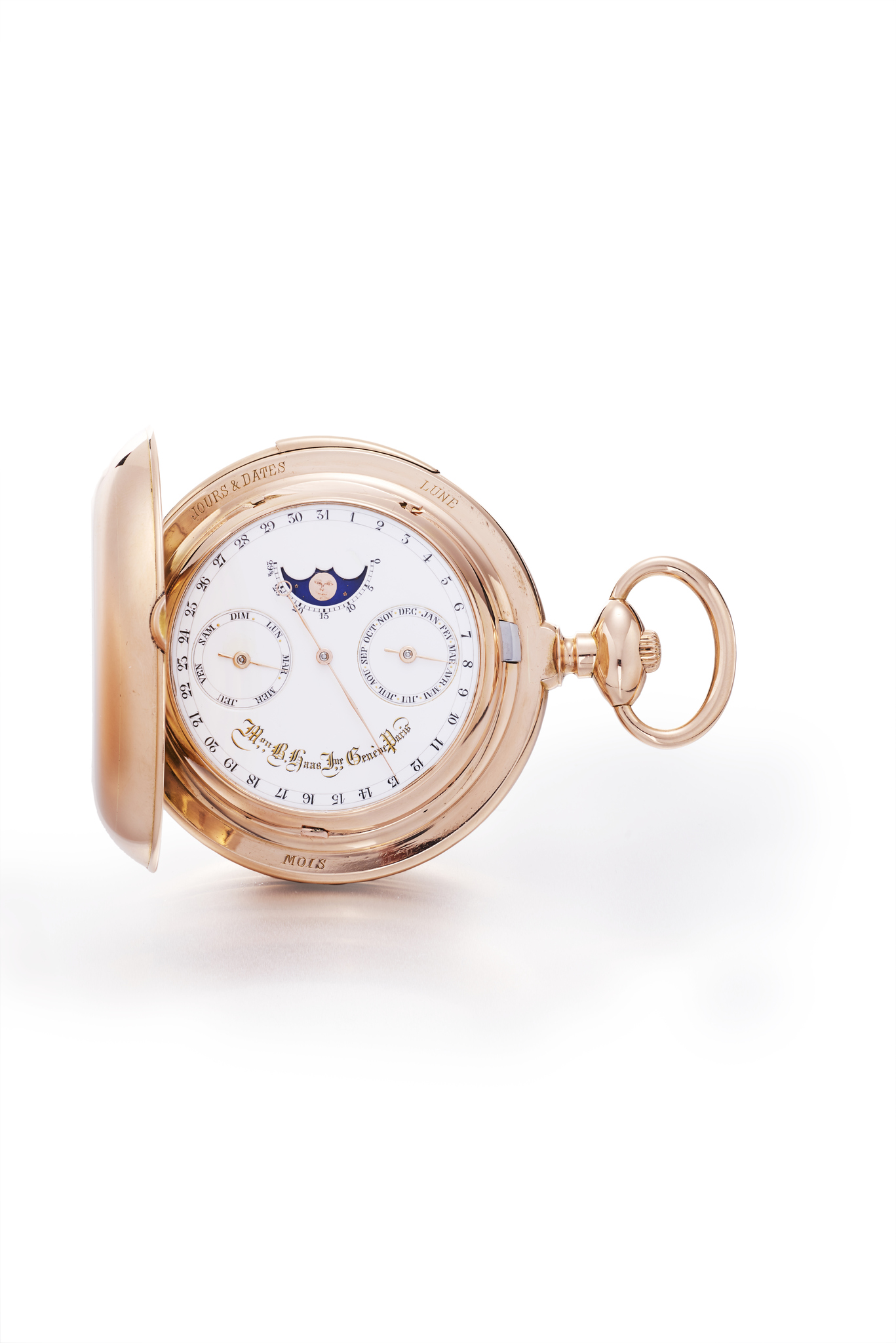
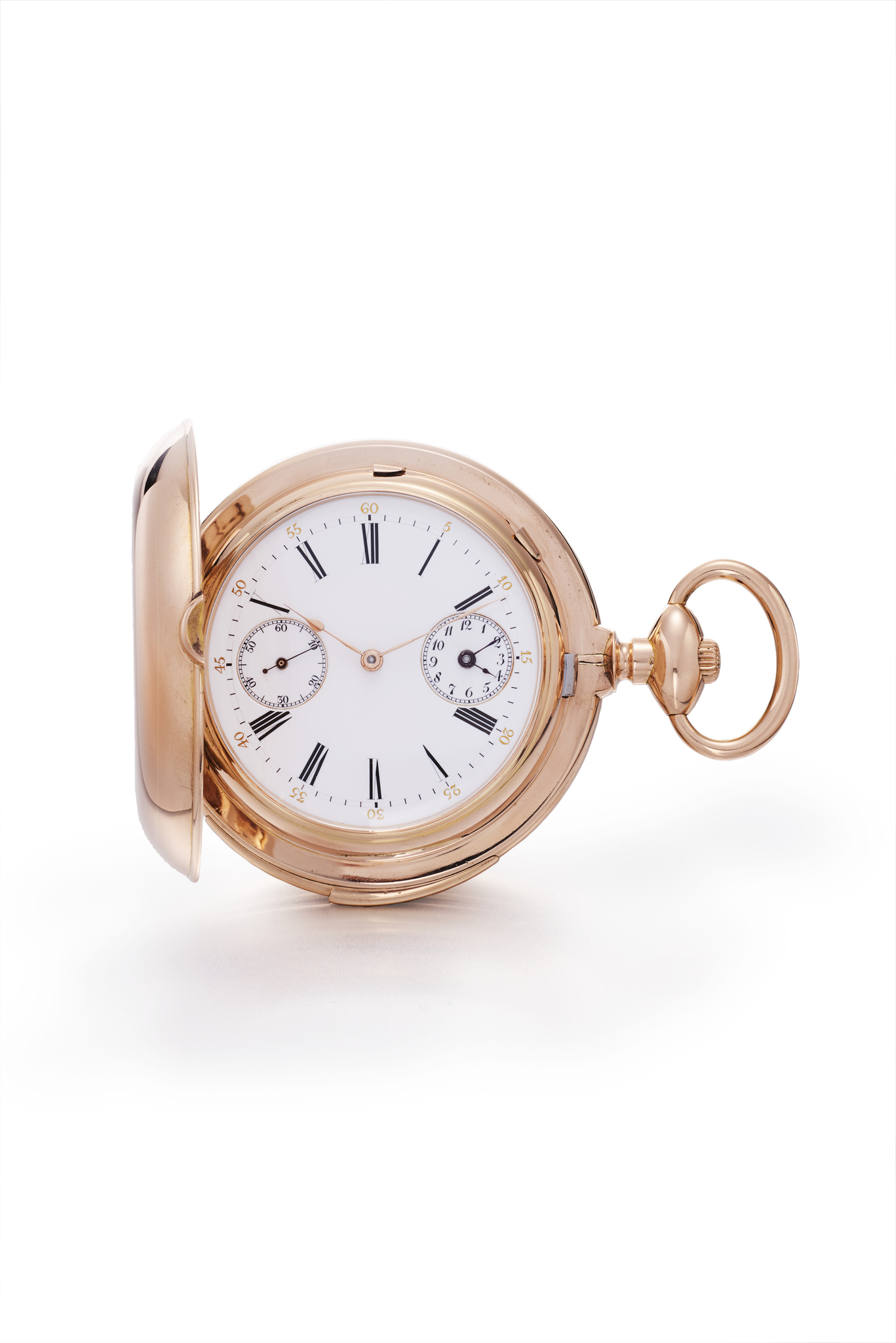
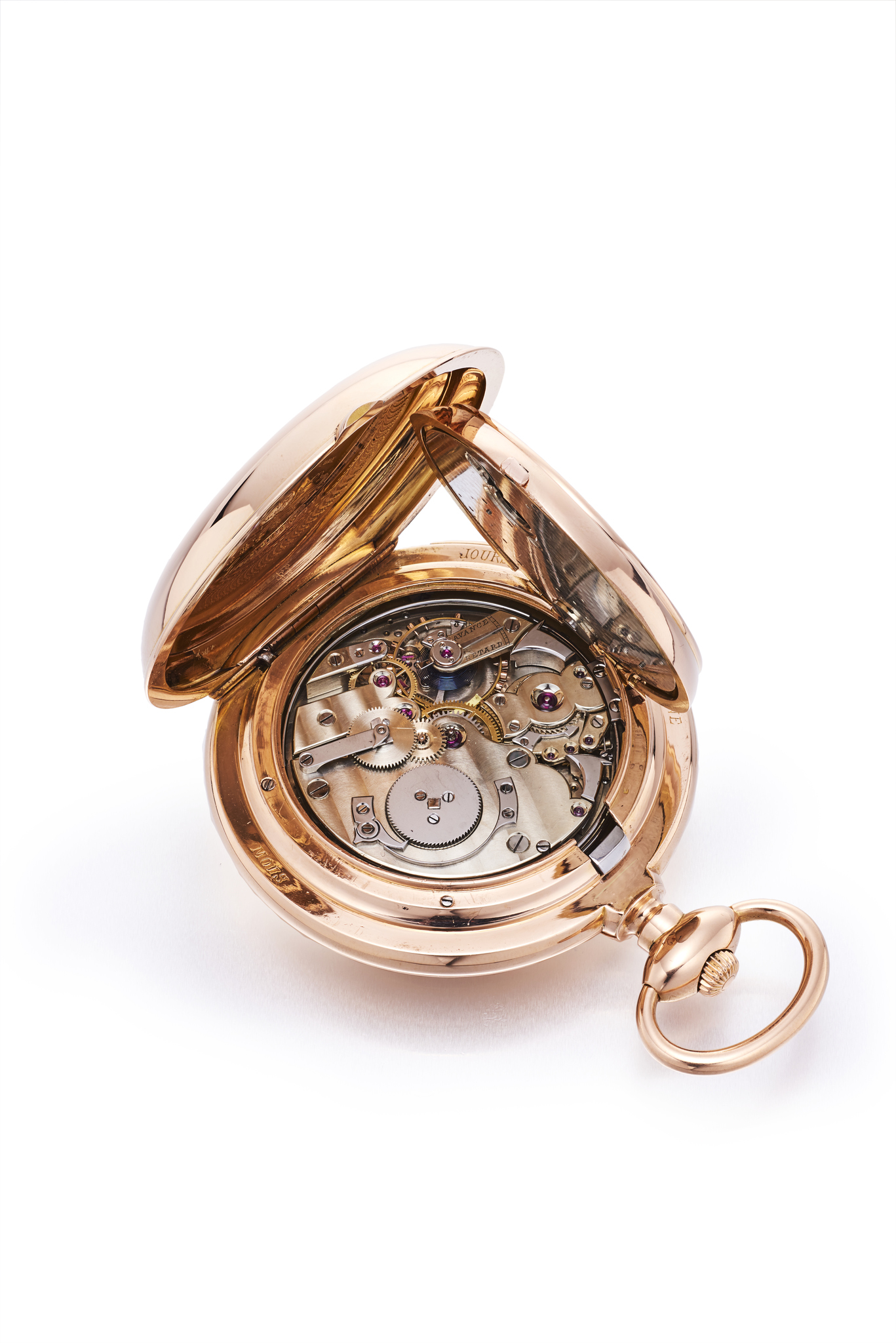
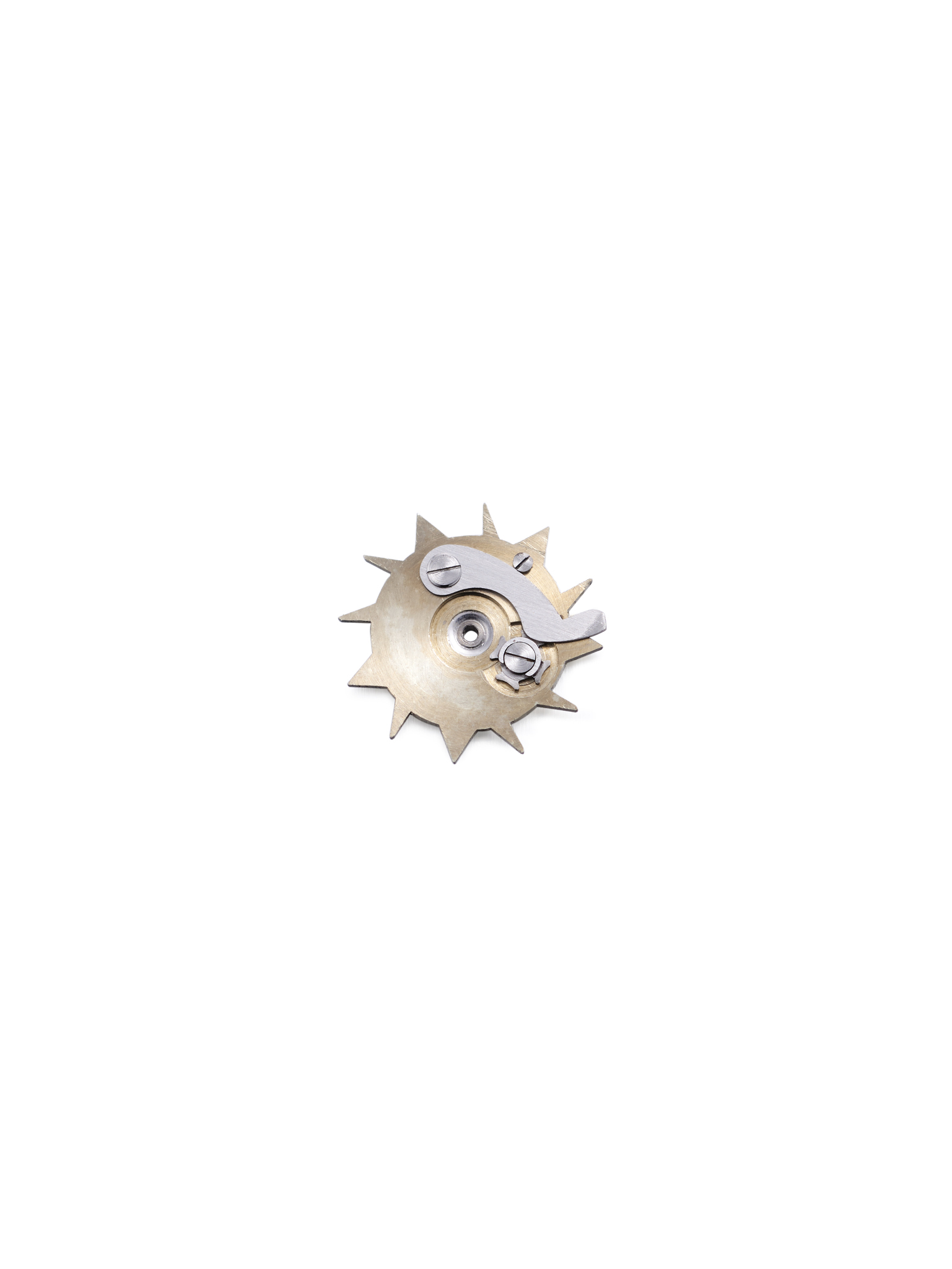
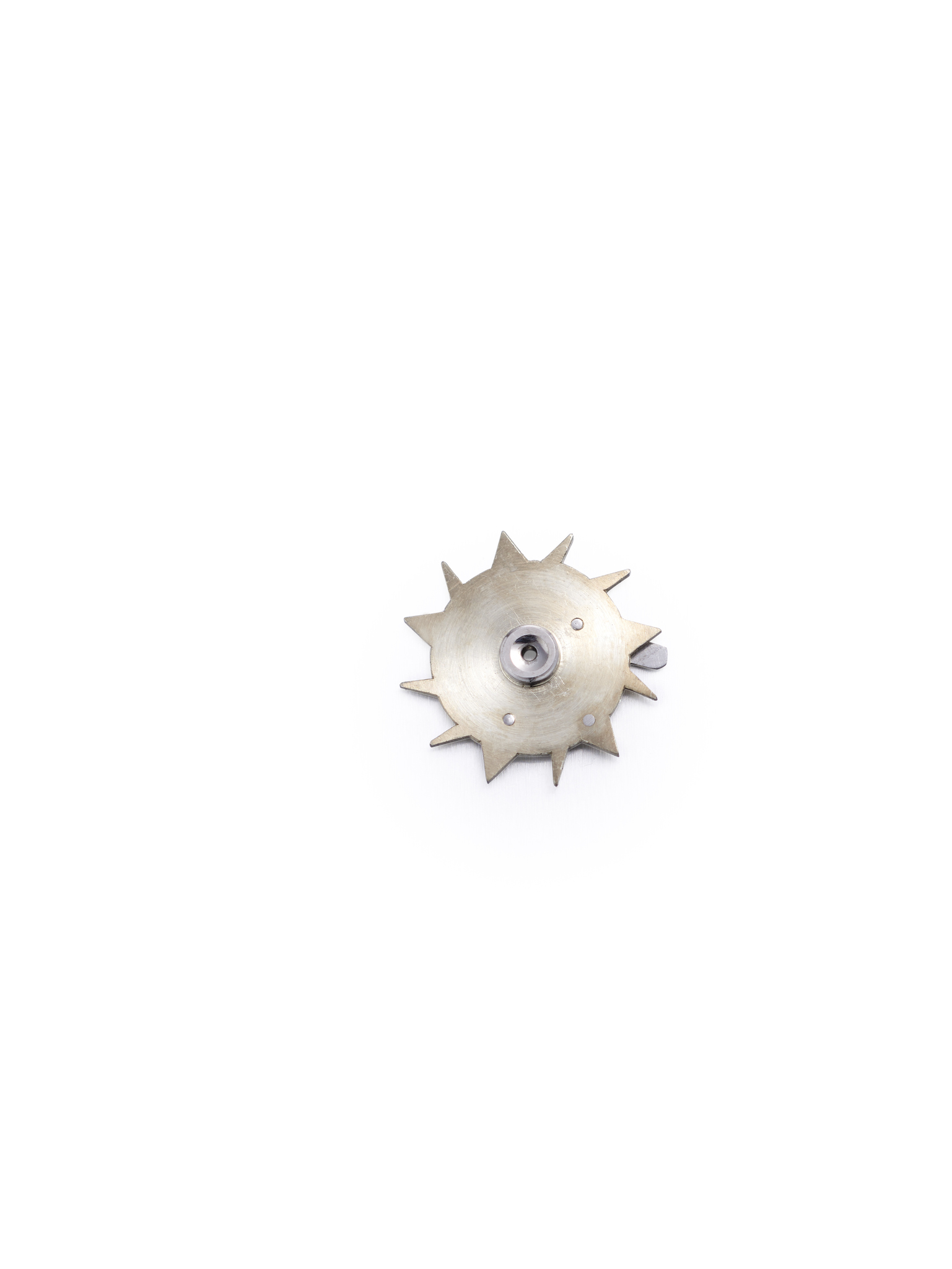
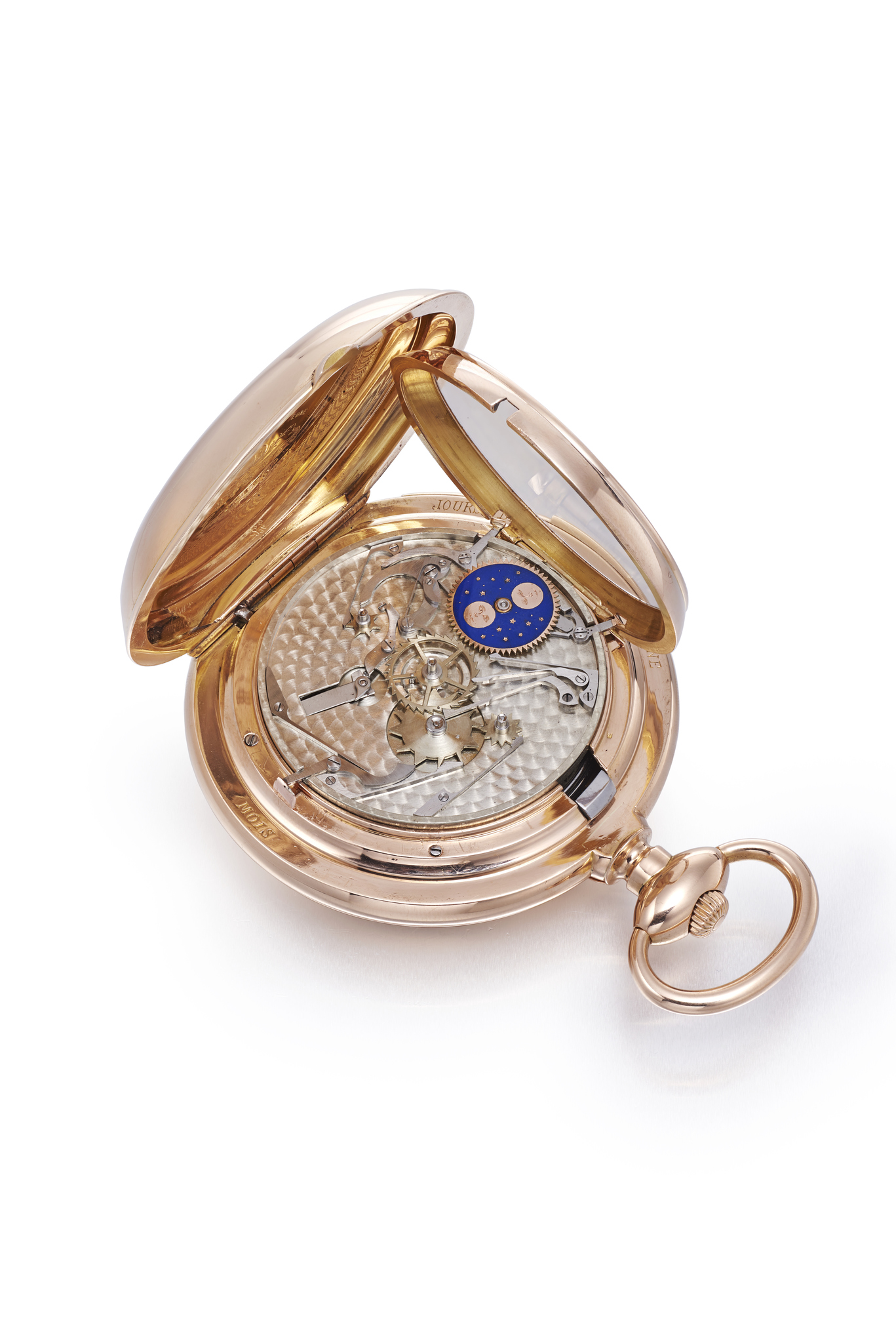
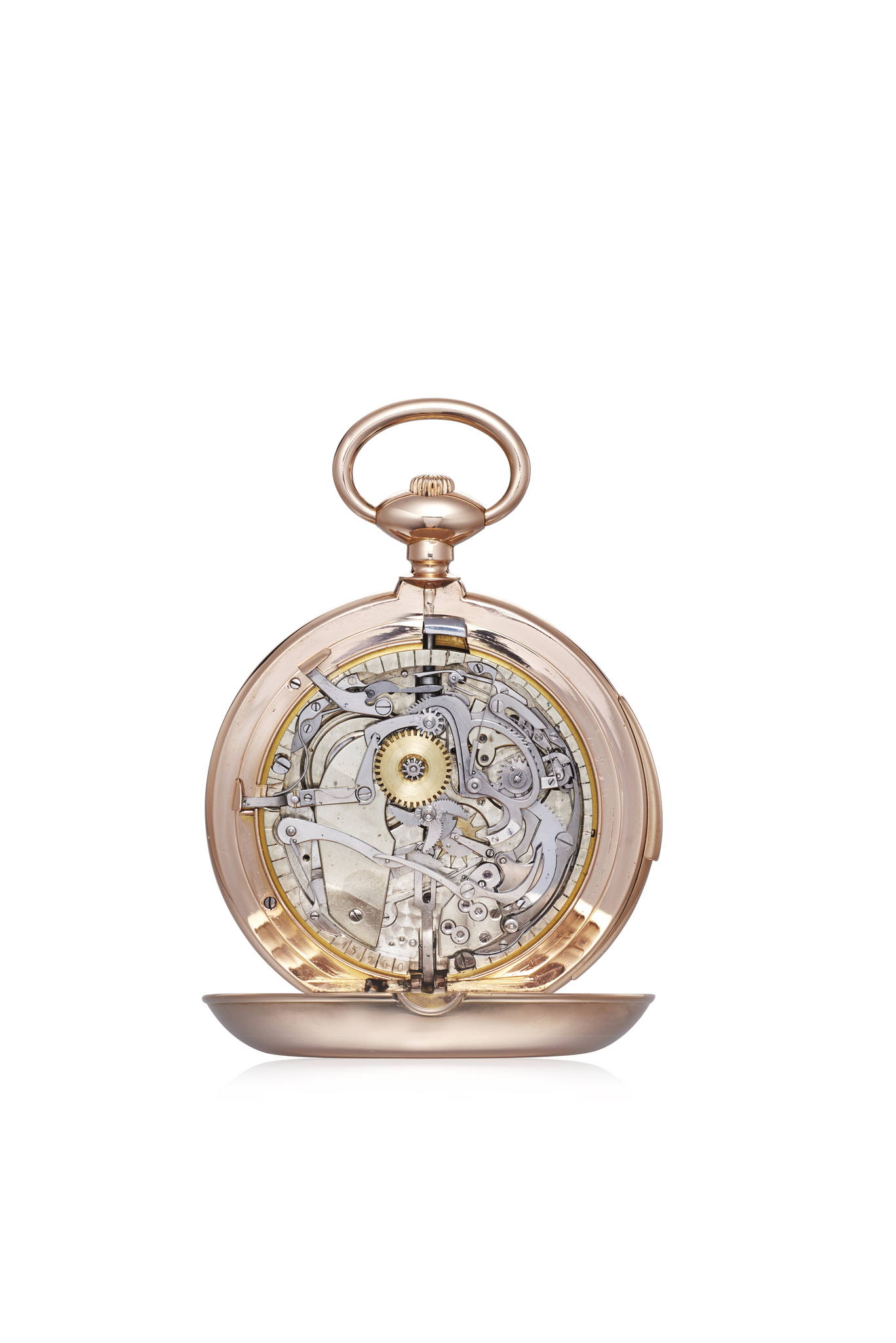
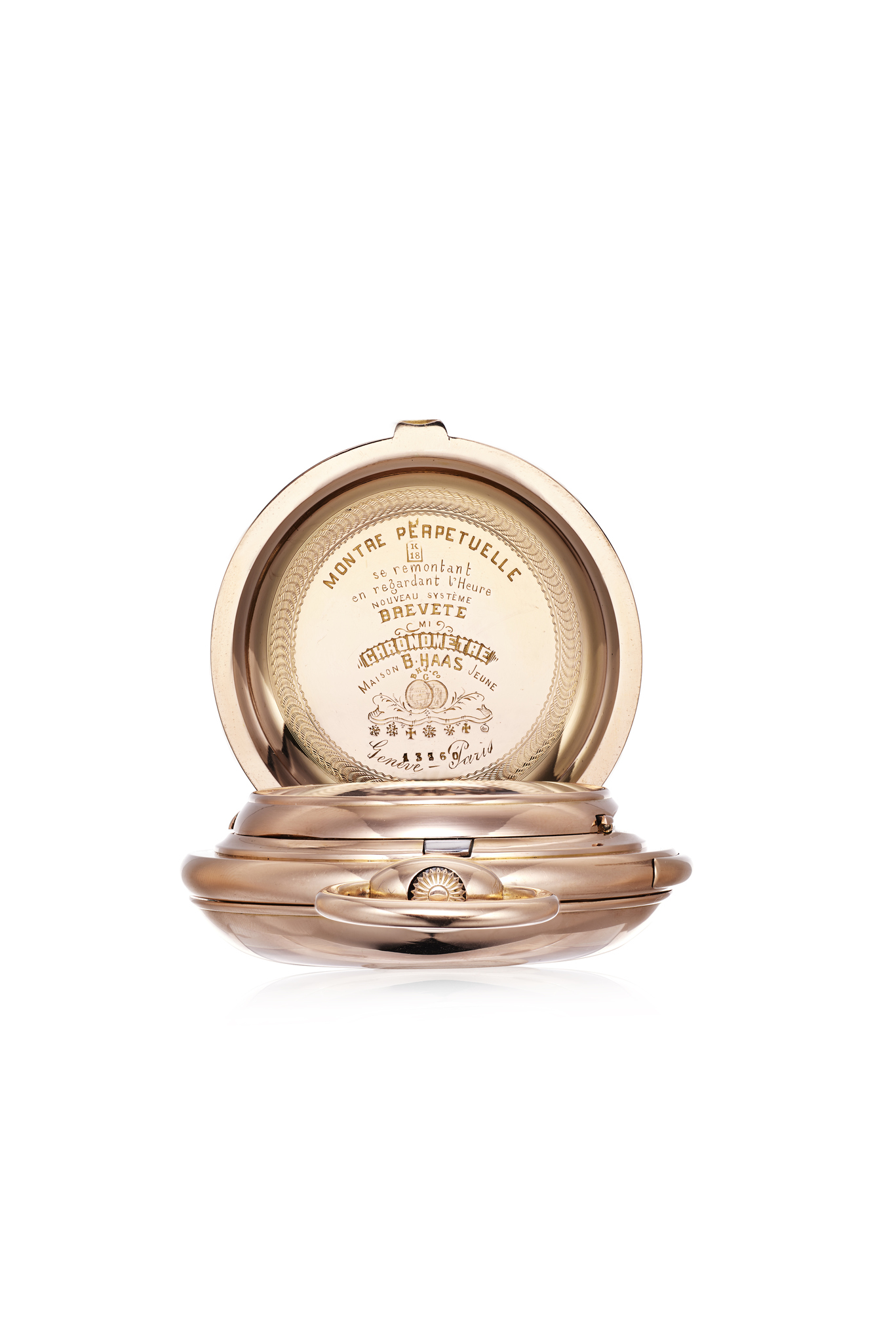
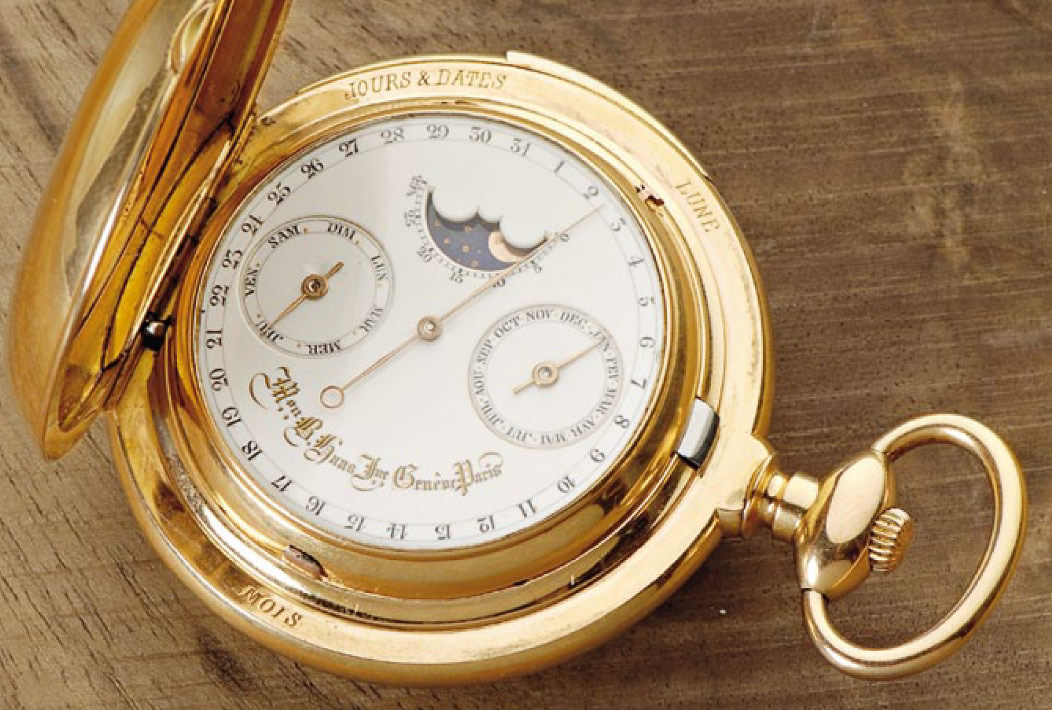
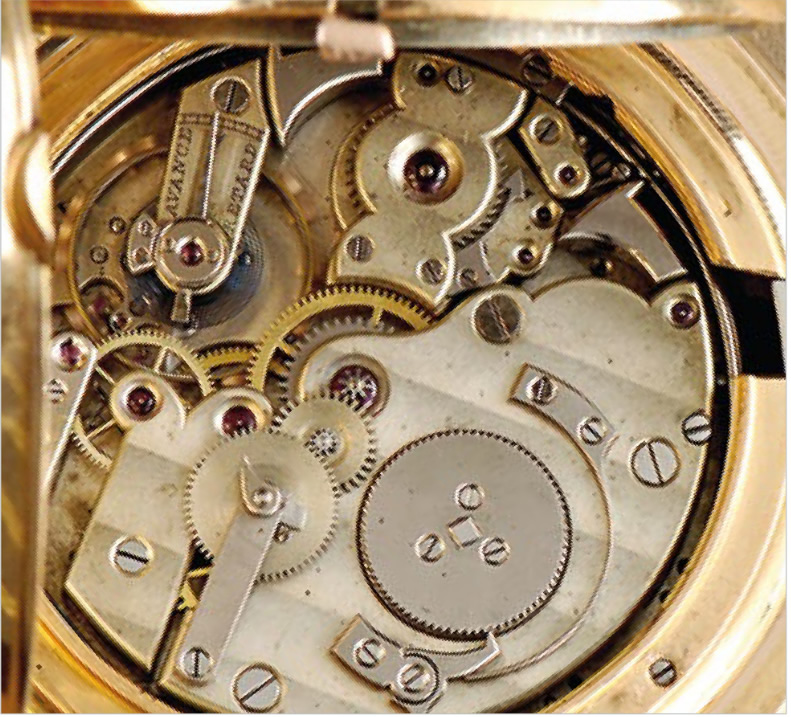
|
|

